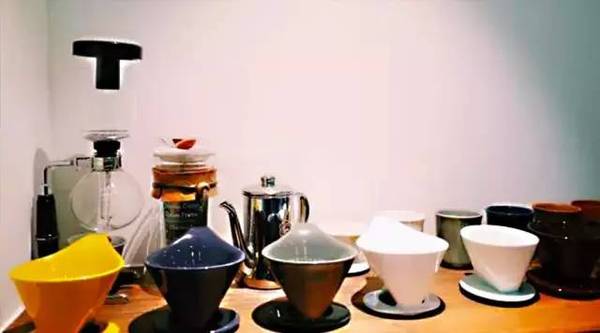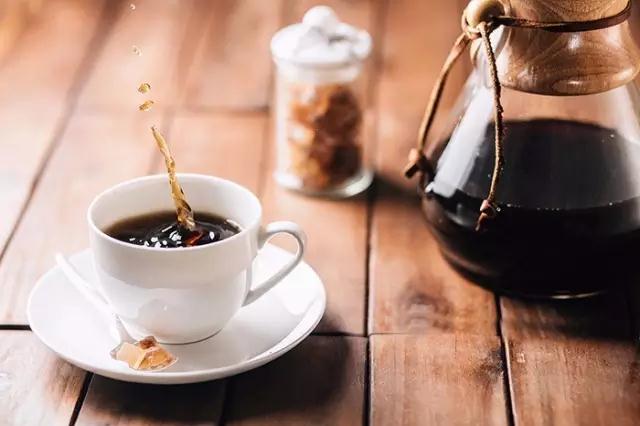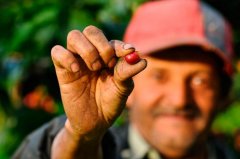How to buy cost-effective coffee, from the manor, table of contents, aroma, flavor to teach you to choose

Professional coffee knowledge exchange more coffee bean information please follow the coffee workshop (Wechat official account cafe_style)
What's the key to a good cup of coffee? Good brewing skills and utensils are indispensable, but high-quality coffee beans are the most important element. Do you have no idea about coffee beans, or are you often dizzy by a bunch of coffee nouns?
When buying coffee beans, apart from seeing the name of the coffee origin in the package or in the text introduction, you sometimes see English and numbers, such as G1, G2, G3, AA, PB, SHB, SHG, HB, and so on. Have you ever wondered what these English or numbers represent? What is the difference between them?
In order to distinguish between good quality coffee beans and poor quality coffee beans, we have to grade the coffee.
Coffee grading is usually carried out according to defect rate, bean size, altitude, raw bean density, treatment standards, etc., but because each country's historical background, trade interests, climate, topography and other factors are different, we cannot use the same standard to calculate defects, or simply to compare heroes in terms of altitude, nor can we compare one country with another. These are all mistakes rather than objective direct comparisons.
Therefore, in more cases, it is a combination of a variety of standards for description, and in order to really understand these English and figures, we have to understand the classification and classification of coffee.
According to the size of beans.
That is, the length and width of the bean body (size), Colombia to "bean size is beauty" as the purpose, classification to the unit, more than 18 mesh (about 0.7cm) for Supremo, the following is Excelso. (item represents the diameter of the coffee bean, one item is 1 inch 64 inch, 1 inch = 25.4mm)
Kenya's grading is based mainly on the size of beans, supplemented by cup quality and bean weight. So we often hear of Kenya AA, the highest quality grade is AA PLUS (AA+), followed by AA and AB (1516 orders, accounting for the majority of production). Wait. In addition, there is PB, which means Peaberry, which is classified by appearance.
Altitude and hardness
A producing country in Central and South America except Brazil and Colombia. For example:
Grade
Altitude
Mark
one
1350 to 1500 meters
SHB (Strictly Hard Bean) extremely hard bean
two
1200mm 1350m
HB (Hard Bean) hard bean
It is also divided into SHG (Strictly High Grown), SG (High Grown) and SC (Central Standard) according to altitude. Basically, the higher the altitude of coffee trees, the harder the coffee beans will be. this is because low temperature, short sunshine, high humidity and other factors will make coffee grow more slowly, grow fruits with higher density, and the flavor of coffee beans, such as acidity and sweetness, will be more saturated. In short, the altitude has a great influence on the quality of coffee beans.
Cup test quality
Although Brazil is one of the largest coffee producing countries in the world, among the coffee producing countries in Central and South America, Brazil's production altitude is on the low side, and its landform is flat, less shaded trees, and lack of micro-climate, so the coffee beans produced are soft, commonly known as soft beans, and taste smoother than other producing areas. So Brazil uses five grades to rate it:
1. Strictly Soft is extremely meek.
2. Soft compliant
3. Softish is a little softer.
4. Hardish is not catchy.
5. Rioy smells of iodine choking.
Smart Brazilians use taste for grading. The Brazilian Coffee Excellence Competition, Cup of Excellence, which has been held since 1999, uses the mild and smooth low acidity, mellow thickness and sweetness of Brazilian coffee, as well as the overall presentation of nutty and cocoa flavors, as the basis for coffee evaluation. "the sweetness, purity and smooth finish of the entrance" has become a representative feature of Brazilian high-quality coffee. This flavor also explains why Brazilian beans often play an indispensable role in special bean recipes.
Only when there are high-quality coffee beans can there be good coffee.
In China, drinking coffee has become an indispensable enjoyment for many people, and more and more people choose to make coffee at home, not only for interest, but also for better coffee quality. If you have, or are planning to do, then the first thing you need to know is that good coffee comes from high-quality coffee beans.
This is the same as most food. No matter how gorgeous it is to cook a fish that is not fresh, it must not be very delicious, but a fresh fish with a little ginger will be very delicious. The same is true of coffee, poor quality coffee beans, no matter how good brewing skills or utensils can not be saved, destined to only make bad coffee.
So, what are high-quality coffee beans? Recall that you have had coffee that tastes good in the past. It probably has two characteristics: the first is the charming aroma, and the second is the good taste. Different varieties of coffee beans have different tastes, and personal preferences vary, of course, but the so-called high-quality coffee beans should be able to retain the aroma and flavor of the coffee as much as possible and emit it completely when it is brewed at the end.
The aroma of coffee comes from coffee roasting
The aroma and taste of coffee are produced after roasting. In the process of baking, the moisture of raw coffee beans is slowly released, the weight is reduced, the color deepens, the volume expands, and the aromatic oil is slowly released. In addition, a large amount of chlorogenic acid originally contained in raw beans will gradually disappear with the baking process, releasing good-smelling fruit acid, and its taste varies with the baking time.

Coffee bean V.S. Coffee powder
Coffee bean coffee powder
After deciding to make your own coffee, the first choice you face when buying coffee is to buy coffee beans (whole coffee beans) or ground coffee powder (ground coffee beans). Leaving aside other personal equipment and time factors, we have only one suggestion: buy coffee beans, just buy coffee beans.
Of course, there is a reason for such a firm recommendation. Do you remember what we said earlier? The aroma of coffee comes from the roasted oil, which is sealed in the holes in the coffee beans. after grinding, the aroma and oil begin to volatilize, and the final brewed coffee flavor is greatly reduced.
In addition, the area of the powder in contact with the air increases and is vulnerable to moisture or deterioration. Under the same conditions, coffee beans can be preserved nearly twice as long as coffee powder.
The only advantage of coffee powder is its convenience, especially if you always oversleep in the morning and don't have time to grind your coffee slowly, or if you haven't bought tools to grind beans, coffee powder can help you enjoy a nice cup of coffee quickly. If you decide to buy coffee powder, then we have the following two suggestions: (1) buy about two weeks at a time, retain the flavor as much as possible, and (2) keep the coffee powder in a good sealed jar.
Is it troublesome to grind your own beans? In fact, it's fun and can maintain the flavor!
Coffee beans are the most complete form to preserve the flavor of coffee and ensure that the coffee is fresh and original. Some manufacturers will mix coffee from different sources in the same bag of coffee powder, so it is difficult for consumers to ensure the source of coffee.
Although grinding beans is also a great knowledge, believe us, once you start grinding your own beans, you will never go back to the days of coffee powder. It is definitely one of the joys of homemade coffee to try the different flavors of various powders.
The best time limit for coffee appreciation
There are quite a variety of coffee beans. How to choose them?
Are you still looking at the expiration date on the package before you buy the coffee? We want to tell you another important thing: the best taste period of coffee is not equal to the shelf life, you should pay attention to the baking time.
The roasting date of coffee beans represents freshness, and fresh coffee beans baked within 2-3 days are usually a good choice. However, baking and buying now is not actually the best time for beans to taste. In addition, coffee beans will continue to emit nitrogen dioxide (exhaust) for about 48 hours after baking, in addition to the smell of tobacco during baking and the smell of beans themselves. therefore, freshly baked coffee beans are not very tasty.
It is recommended to buy coffee beans for about 2 weeks at a time and keep them indoors. It is also recommended that the coffee beans should be used in 2 weeks when the flavor is the best and most delicious.
Important Notice :
前街咖啡 FrontStreet Coffee has moved to new addredd:
FrontStreet Coffee Address: 315,Donghua East Road,GuangZhou
Tel:020 38364473
- Prev

What do some English words and numbers stand for on the name of coffee? how can you tell the difference between them?
Professional coffee knowledge exchange more coffee bean information Please follow the coffee workshop (Wechat official account cafe_style) We often see some English words and numbers on the name of coffee. In addition to representing the name of origin, they also have English words like codes or combinations of English plus numbers: for example: Kenya AA Special, Colombia Supremo, Ethiopia Yir
- Next

Get yourself a cup of coffee with unique flavor and aroma (organic cotton coffee filter bag)
Professional coffee knowledge exchange more coffee bean information Please follow the coffee workshop (Wechat official account cafe_style) friends who like to brew coffee by hand, will they think that using filter paper is wasteful and unenvironmentally friendly? In addition to the stainless steel filter cup that I shared with you before-filter paper, now there is another environmentally friendly new choice "organic cotton coffee filter bag"! Reuse without producing disposable sponges
Related
- Beginners will see the "Coffee pull flower" guide!
- What is the difference between ice blog purified milk and ordinary milk coffee?
- Why is the Philippines the largest producer of crops in Liberia?
- For coffee extraction, should the fine powder be retained?
- How does extracted espresso fill pressed powder? How much strength does it take to press the powder?
- How to make jasmine cold extract coffee? Is the jasmine + latte good?
- Will this little toy really make the coffee taste better? How does Lily Drip affect coffee extraction?
- Will the action of slapping the filter cup also affect coffee extraction?
- What's the difference between powder-to-water ratio and powder-to-liquid ratio?
- What is the Ethiopian local species? What does it have to do with Heirloom native species?

